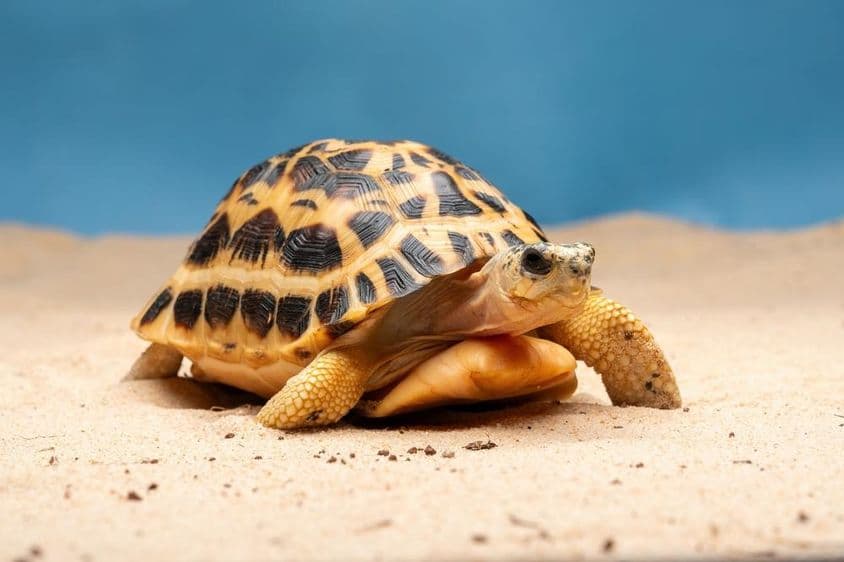Dubai's Turtle Triumph: Community Saves 80 Turtles

80 Turtles Rescued From Shores - With Community Help
Since the beginning of the year, 80 distressed turtles have been rescued off the coast of Dubai, and the number is growing by the day. The Dubai Turtle Rehabilitation Project (DTRP) and the local community's collaboration has given these animals a chance to survive and return to their natural habitat. Most of the rescued turtles are young hawksbill turtles, experiencing their first winter, with their body weight ranging between 150 and 400 grams.
Winter Challenges for Young Turtles
According to the director of the Jumeirah Burj Al Arab aquarium and the head of the DTRP, recent times have been extremely busy. Nine turtles were rescued in one day alone, a record in the program's history, although the average daily rescue number ranges from one to five. Last week, the DTRP issued a call on social media, urging beachgoers to contact their rescue line, 800TURTLE, if they find a turtle in distress. The message spread widely, and the number of calls significantly increased.
Since the project's inception in 2004, a total of 2,196 rehabilitated turtles have been released back into the ocean, with 89 of them equipped with satellite tracking devices. One tracked turtle traveled as far as Thailand.
Rescue Process and Common Dangers
The biggest challenge for young turtles is finding adequate food and a protected habitat during the first months. A significant number of rescued turtles were covered in barnacles and oysters, hindering their movement. Some green turtles were also saved, including individuals missing their front flippers, likely due to entanglements in fishing nets and suffering severe injuries.
The condition of rescued turtles varies. While most respond well to care, some arrive at the center in critical condition. One turtle, for example, was severely troubled by the violent removal of barnacles, while two others had swallowed plastic pieces, causing severe intestinal blockages. Experts repeatedly warn the public not to attempt removing parasites attached to the turtles' shells, as these are connected to their bodies through nerve endings, and improper removal can cause pain and infections.
Rehabilitation and Recovery
The initial treatment for rescued turtles begins at the Jumeirah Burj Al Arab aquarium, with the recovery process continuing at the Jumeirah Al Naseem Turtle Rehabilitation Sanctuary. Here, visitors can get an insight into the turtles' rehabilitation and participate in educational programs and daily turtle feedings.
The program annually welcomes approximately 1,500 students from the UAE's seven emirates, providing opportunities for young people to learn firsthand about the importance of protecting sea turtles. The center's daily routine includes monitoring the turtles' health, changing the water, administering medications, and feeding them. On certain days, the animals require veterinary care, such as X-rays or surgeries. Additionally, the team participates in maintaining the Jumeirah Burj Al Arab aquarium and a coral restoration project, which requires daily diving operations.
Environmental Challenges and the Future of Turtles
In addition to rescuing and rehabilitating turtles, experts also highlight the negative impacts of climate change. Global warming is causing more storms and floods, which destroy turtle nesting sites. Rising sea levels and the destruction of coral reefs also threaten their habitats.
Higher temperatures affect the nesting temperatures of turtles, leading to a shift in gender ratios. For turtles, temperature determines whether the eggs hatch as males or females: warmer sand results in more females, while cooler sand leads to more males. Climate change may disrupt the balance of populations, threatening the long-term survival of the species.
Furthermore, changes in ocean currents affect turtle migration and make it harder for them to find food. Increasing plastic pollution poses a serious threat, as many turtles ingest plastic floating in the ocean, mistaking it for food.
Summary
Thanks to the dedicated work of the Dubai Turtle Rehabilitation Project and the local community, more distressed turtles are successfully rescued and returned to nature. However, climate change and environmental pollution continue to pose significant threats to these ancient marine creatures in the long term. The role of the public is crucial: with the right information and support from local rescue teams, anyone can contribute to the protection of turtles. The example of the Dubai Turtle Rehabilitation Project shows that by working together, real change can be achieved in protecting marine life.
If you find any errors on this page, please let us know via email.


